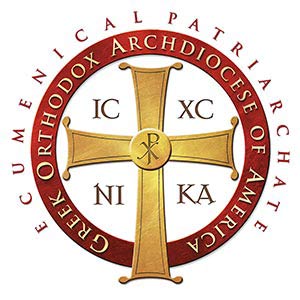Message from Metropolitan Alexios
My Beloved Ones,
pray that all of you have experienced a healthy and productive beginning to this new year of 2019. This Sunday’s Gospel also looks ahead to the remainder of the liturgical year, acting as a bridge between the Nativity season, and the Triodion.
On the Sunday after Epiphany our Lord hears that John the Baptist has been arrested. Knowing that the Forerunner’s ministry has ended, Christ leaves His home in Nazareth, journeying to “…Capernaum by the sea, in the territory of Zebulun and Naphtali…” (Matthew 4:13). This was done so, “…that what was spoken by the prophet Isaiah might be fulfilled: ‘The land of Zebulun and the land of Naphtali, toward the sea, across the Jordan, Galilee of the Gentiles—the people who sat in darkness have seen a great light, and for those who sat in the region and shadow of death light has dawned.’ (Matthew 4:13-16). The Messianic prophecies of Isaiah of course bring to our minds the feasts of the Nativity and Theophany that we have just experienced: the light of the Star of Bethlehem has now begun its work, spreading across the land.
For all the peace and merrymaking that the holidays bring, the hymns we heard on the Feast of Theophany are like those of Good Friday. When He entered the River Jordan, Christ took His first steps to the Cross. The work of the Incarnation is only complete when we contemplate the empty tomb. Christ’s own birth foreshadows His redemptive death: wrapped in cloth and lying in a cave, he will be presented once again with gifts of myrrh. But as the Troparion for the Sunday of the Myrrhbearers proclaims, “The angel came to the myrrhbearing women at the tomb and said: Myrrh is meet for the dead; but Christ has shown Himself a stranger to corruption!” Every feast ultimately points toward that Feast of Feasts: Pascha.
Matthew ends his Gospel, looking away from Isaiah, and towards the fulfillment of John’s work. The Evangelist stresses that Christ began to use a phrase that would have been familiar to all who experienced John’s baptism: “Repent, for the kingdom of heaven is at hand” (Matthew 4:17). It seems appropriate that we are being called to begin walking with Christ on His ministry, just as the secular world begins its New Year. Each signals a time for fresh beginnings, working towards, not just earthly betterment, or even repentance, but Theosis.
My New Year’s wish is that we use the spiritual lessons we have gained this Nativity season—love, peace, forgiveness, and joy—to better our souls, as we approach the Greatest moment of our liturgical year, as well.
+ALEXIOS
Metropolitan of Atlanta
Youth, Education and Hellenic Culture
For information on Policies for the Safety of Youth and Children, please click this link! Please remember that all parishes must comply and sign their parish contracts by December 1 to host any youth ministry programs or events on the parish level (Sunday School) or to participate on a District or Metropolis Level Events (Retreats, WYR & HDF).
For Youth activities like Winter Youth Rally, HDF, or the Connect Conference, click this link!
Family Life Ministry
A growing branch of Family Life Ministry and generously powered by Leadership 100, Engage Orthodoxy is a place for anyone to find Orthodox Christian Content curated by a thoughtful and intentional administrative team.
“Engage Orthodoxy” is not only the name of this new site, but it is also the name of a movement away from division and towards unity. Engage Orthodoxy is a movement towards community, involvement, Orthodox friendships, and relationships. EO seeks to bring the the faithful, the curious, the lost, and the searching TOWARDS their faith and Christ and in turn, towards each other. Engage Orthodoxy is a movement forward into the future of the faith. Join us as we move toward Christ, toward each other, and toward the church.
For more information, or to order “Woven: An Interactive Book for the Modern Teenage Girl on Orthodox Christianity” please visit, woveninhislove.org
We also share with you helpful links from the OCN and the Family Life Ministry of the Metropolis of Atlanta.
Journey of Marriage (Pre-Marital Seminar)
All couples marrying in the Metropolis must attend a Metropolis-sponsored Journey of Marriage seminar prior to their wedding. The couple will present their certificate of completion to their parish priest after the seminar.
- Jan 18, 2020 - Annunciation, Ft Myers, FL
To see the full list of seminars in Florida and in our entire Metropolis please visit: http://www.familylifeministry.atlanta.goarch.org/upcoming-events-2/
Registration is online. Materials costs are included in the registration.
The Strategic Plan
Clergy-Laity Workshops (6/27 & 6/28/19)
FOUR OF THE WORKSHOP PRESENTATIONS WERE TAPED AND WILL BE PUT IN THE COMPLETED MATERIALS SECTION OF THE STRATEGIC PLAN WEBSITE IN THE COMING WEEKS.
STAY TUNED
Take a look at the online portal.
Vist www.atlstrategicplan.org/portal to view a list of the several goals completed in 2017.
 WASHINGTON – His Eminence Archbishop Elpidophoros of America attended tonight a State Department reception in honor of the Prime Minister of Greece, His Excellency Mr. Kyriakos Mitsotakis.
WASHINGTON – His Eminence Archbishop Elpidophoros of America attended tonight a State Department reception in honor of the Prime Minister of Greece, His Excellency Mr. Kyriakos Mitsotakis.
 The 8th annual celebration of Hellenic Heritage & Dance, PARATHOSI 2020, of the Direct Archdiocesan District of the Greek Orthodox Archdiocese of America, will take place on Saturday January 11th, 2020 at the Long Island Marriott in Uniondale, NY.
The 8th annual celebration of Hellenic Heritage & Dance, PARATHOSI 2020, of the Direct Archdiocesan District of the Greek Orthodox Archdiocese of America, will take place on Saturday January 11th, 2020 at the Long Island Marriott in Uniondale, NY.
 His Eminence Archbishop Elpidophoros of America, presided for the first time since he became Archbishop last year, at the annual 114th celebration of Theophany (Epiphany), the Hierarchal Divine Liturgy, the Great Blessing Service of the Waters and the Dive for the Cross in Spring Bayou, while many thousands of pilgrims and visitors attended the festivities.
His Eminence Archbishop Elpidophoros of America, presided for the first time since he became Archbishop last year, at the annual 114th celebration of Theophany (Epiphany), the Hierarchal Divine Liturgy, the Great Blessing Service of the Waters and the Dive for the Cross in Spring Bayou, while many thousands of pilgrims and visitors attended the festivities.









